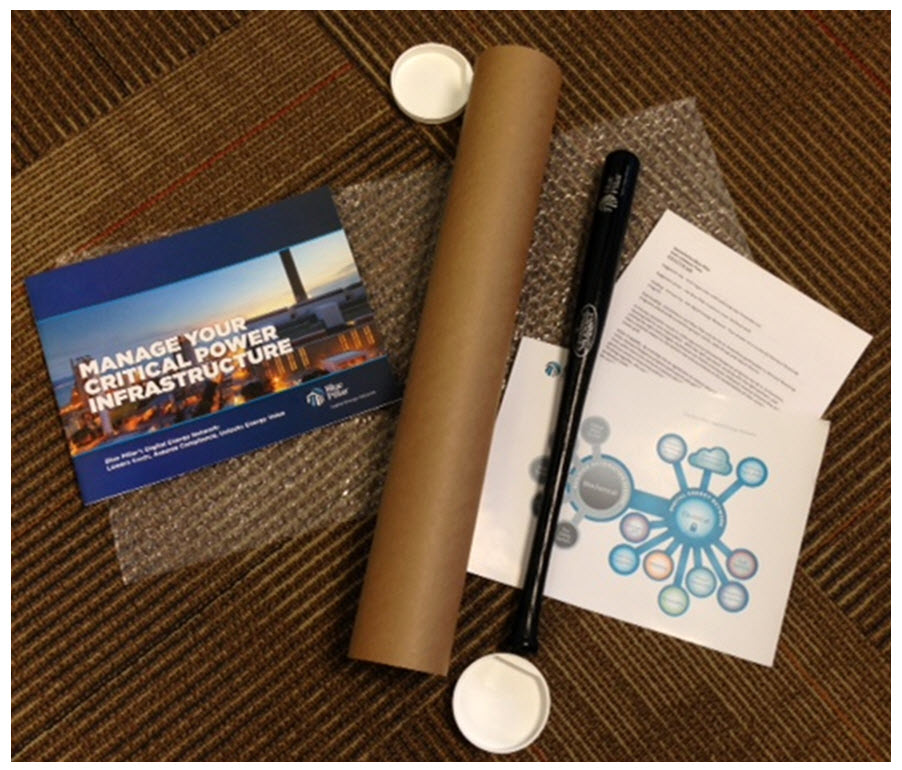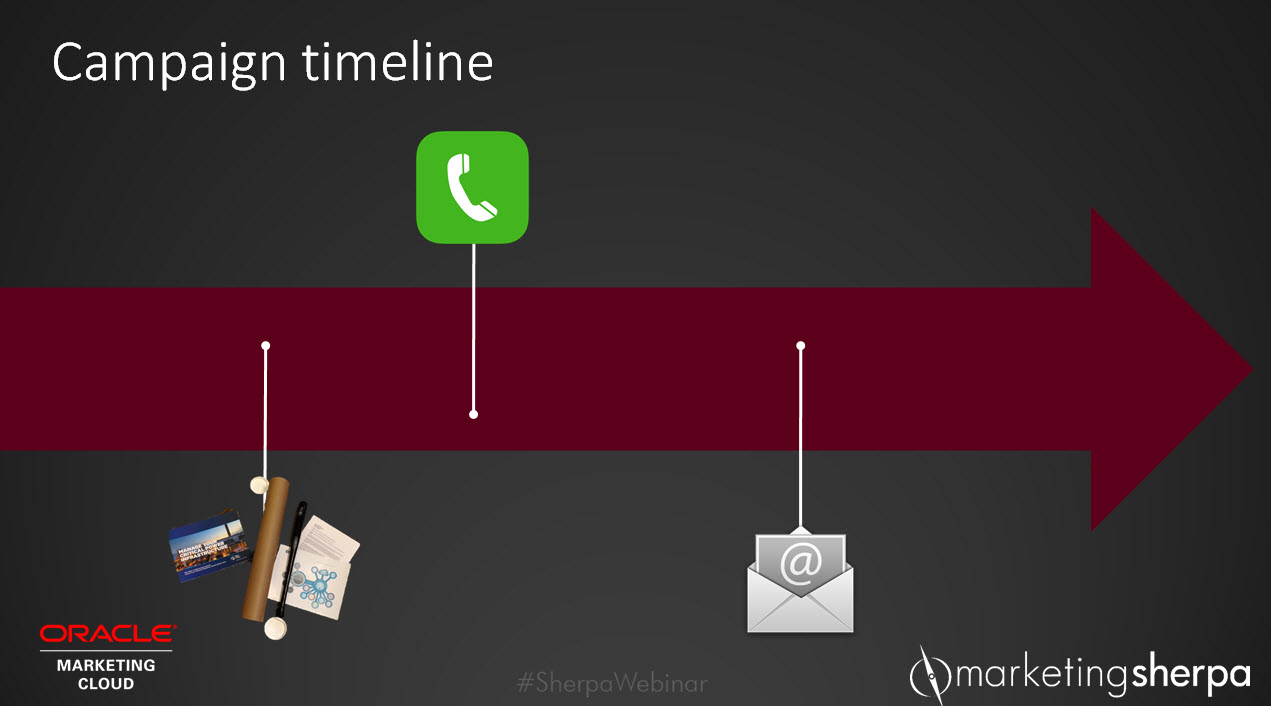Lead Generation: How to establish a connection offline
Originally published on B2B LeadBlog
Typically, we’re the ones asking the hard-hitting questions during our MarketingSherpa webinars. But in a recent live broadcast, the roles were reversed.
Bob Birge, Director of Marketing, Blue Pillar, put webinar host and MECLABS Director of Editorial Content Daniel Burstein on the spot.
“When’s the last time you got a personal letter at work?” Bob asked.
“I can’t even remember,” Daniel said. “If I really think back, maybe three, six months ago from a job interviewee I had thanking me for the job interview I did with them.”
Bob was backing up a recent study claiming that the typical business person only receives a personal letter once every seven weeks, yet receives an excess of 100 emails a day. These findings served as inspiration for Blue Pillar’s marketing campaign that was the heart of the MarketingSherpa webinar, “How to Use a Multichannel Campaign to Reach Key Decision-Makers.”
Bob shared insights into the critical power company’s process in sending a tangible, personalized direct mail piece to target customers.
“I think part of the brilliance of what you did here, Bob, is a lot of times as marketers, we follow the trend — what’s the word in the cloud, what’s everyone doing in mobile, social and everything,” Daniel said. “We just get kind of mixed in with the noise of that, and you really looked to zig where others zagged.”
The end goal of Blue Pillar’s marketing efforts was to schedule briefings with the decision-makers of target companies. This included those from hospitals, data centers, universities and research facilities — people who are typically swamped with daily emails.
The marketers at Blue Pillar decided to take themselves out of the crowded email sphere and eliminate that major challenge altogether.
“We’re very confident that when we get in front of the right person — people that can understand what we do and the complexities of it — good things happen,” Bob said. “A light goes off and we’re off and running, but that first step needs to happen — get in front of the right person. Sometimes, that’s a lot more difficult than it sounds.”
The team usually shoots right for the top of organizations, directing email campaigns and phone calls to C-suite executives. The results weren’t ideal. Bob shared that one of Blue Pillar’s email campaigns sent to 200 targets amounted to zero briefings.
“It was really more on the execution, or the lack of results, that we got hurt, and then we needed to establish a connection,” Bob said. “Those were two important steps: Who are you trying to reach, and then what do you do to establish that connection? And that’s where we were stumbling.”
 After looking at results from Blue Pillar’s email efforts as well as that study Bob mentioned earlier, the team concluded that using emails for introductions to prospects wasn’t the way to go. Because of the limited amount of personal mail people receive, Blue Pillar sought to stick out with a mailer.
After looking at results from Blue Pillar’s email efforts as well as that study Bob mentioned earlier, the team concluded that using emails for introductions to prospects wasn’t the way to go. Because of the limited amount of personal mail people receive, Blue Pillar sought to stick out with a mailer.
Bob explained that years ago, he had success by using a mini Louisville Slugger baseball bat in a campaign. Because Blue Pillar’s effort was set to run in early summer, Blue Pillar opted to use this item again while also employing multiple channels for a baseball-themed effort.
Blue Pillar targeted 100 individuals positioned in the C-suite of organizations. The first piece of the campaign was the mailer that contained:
 A mini Louisville Slugger baseball bat stamped with the Blue Pillar logo
A mini Louisville Slugger baseball bat stamped with the Blue Pillar logo- Collateral pieces on Blue Pillar (what the company is, what it offers)
- A personal letter to the target
The letter was considered truly “personal” not only because it directly addressed the target by name, but because it included several details about the target’s company, such as where the target was located, as well as how many facilities it had. Sticking with the baseball analogy, the letter outlined strikes (problems), and then Blue Pillar’s solutions (single, double, triple, homerun).
The team waited two weeks after dropping the packages in the mail before conducting follow-up phone calls to ensure they were received. Beginning the conversation with the baseball bat served as an instant ice breaker, and Bob made many of these calls himself.
“[I said,] ‘Hey, about two weeks ago I sent a package. It would have included a black mini Louisville Slugger baseball bat,’ and a light went on. All of a sudden, I became their best friend.”
Asking about the bat, Bob explained, was a far more memorable item to recall than calling to ask about the delivery of an email.
“I knew that between the last two weeks, they probably didn’t get any other mini Louisville Slugger baseball bats,” he said. “So now we’ve connected.”
Rather than utilizing an email as its starter, Blue Pillar put it to play as its closer. The final piece of the campaign was following up with the target via email — after the connection was established — to schedule that briefing.
It worked. Take a look at Blue Pillar’s stats from the campaign:
- 100% of the targets received the package
- 14 executive briefing calls scheduled
- 21 calls completed with engineers and facility managers
At the close of the 30-minute webinar, Bob shared his top takeaways:
- Connect where others neglect
- Establish an offline connection
- Use emails to keep things moving
- Be original
“It goes back to the basics: learn your product, learn your audience and then [find] a way to reach them,” Bob said.
For even more of Bob’s story, check out the full MarketingSherpa webinar replay of, “How to Use a Multichannel Campaign to Reach Key Decision-Makers.”
You may also like
Multichannel Marketing: Direct mail, phone and email combine to lift executive briefing calls 50% [Case study]
Lead Generation: Does your teleprospecting deliver value to prospects? [More from the blogs]
2013 Year in Review: Top 6 focus areas for B2B marketers this year [More from the blogs]
Categories: Lead Generation B2B LeadBlog










